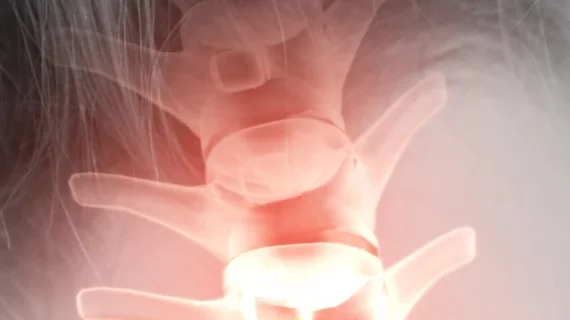Research published online Sept. 3 in Scientific Reports concluded that an artificial intelligence (AI) algorithm can differentiate between tuberculous (TB) spondylitis and pyogenic spondylitis on MRI exams with the same level of expertise as skilled musculoskeletal radiologists.
Sungjun Kim, PhD, a radiologist at Yonsei University College of Medicine in Seoul, South Korea, and colleagues trained a deep convolutional neural network (DCNN) to provide a quantitative value for abnormalities detected on spine MRI exams.
The number of infectious spondylitis cases has risen due to an increasing number of older age, a universal use of invasive spinal procedures and the improvement of imaging diagnostic accuracy. It is also important to differentiate between TB and pyogenic spondylitis because rapid anti-TB treatment can prevent future disability, the researchers noted.
Spine MR images of 80 patients with tuberculous spondylitis (a total of 151 MR examinations) and 81 patients with pyogenic spondylitis (a total of 143 MR examinations) diagnosed from January 2007 to December 2016 were used for the study. The average age of the patients with tuberculous or pyogenic spondylitis were 59 and 64 years.
The images were interpreted by the DCNN and three skilled musculoskeletal radiologists with 10, nine and seven years of experience who independently evaluated 161 cases used in the study.
The researchers trained an object detection and classification model as a DCNN and was designed to calculate the deep-learning scores of each patient to differentiate between TB and pyogenic spondylitis, according to the researchers.
Ultimately, the researchers found that the performance of the DCNN classifier was statistically comparable to that of the three radiologists.
The DCNN correctly classified 123 patients while the three radiologists correctly classified 113, 112 and 114 patients. The diagnostic performances of the DCNN classifier and of the three radiologists were expressed as receiver operating characteristic (ROC) curves, and the areas under the ROC curves (AUCs) were compared using a bootstrap resampling procedure, according to the researchers.
The average deep learning score for TB spondylitis patients was 0.570 compared with 0.266 for pyogenic spondylitis, respectively.
"It was encouraging that the DCNN classifier had a similar AUC to that of the radiologists, considering the similarity between the MR findings of the two diseases,” the researchers wrote.
The researchers noted, however, that additional testing is needed with a supplemental set of multiplane MR images to validate their deep learning-based method.

